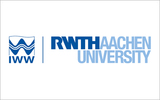The effect of fine-sediment infiltration on the exchange between groundwater and surface water in the hyporheic zone
The river bed or hyporheic zone represents a valuable habitat for aquatic organisms. The suitability of the hyporheic zone as a habitat for organisms strongly depends on the oxygen supply towards this zone and the rate of waste water removal from this zone. These processes depend on the exchange rate between surface water and groundwater and on the porosity and permeability of the hyporheic zone. A problem in many rivers is the human-induced infiltration of fine sediments into the hyporheic zone, reducing this porosity. Furthermore, contaminants adhere to fine sediments and influence the biological and chemical processes in the hyporheic zone.
The objective of the research project is to conceptualize and set-up a HPC model to describe the processes in the hyporheic zone. The project consists of the conceptualization of a HPC-model, the set-up of a sediment packing model taking into account fine sediment fluxes, the coupling of the packing model to a hydraulic model to consider sediment infiltration, the coupling to a groundwater model to consider exchange between groundwater and surface water and the integration of an oxygen transport module to consider the ecosystem function of the zone. The coupled model will be used to identify the conditions in which fine sediment infiltration occurs, determine how fine sediment infiltration affects porosity, the exchange between groundwater and surface water, and the suitability of the hyporheic zone as habitat for organisms.


